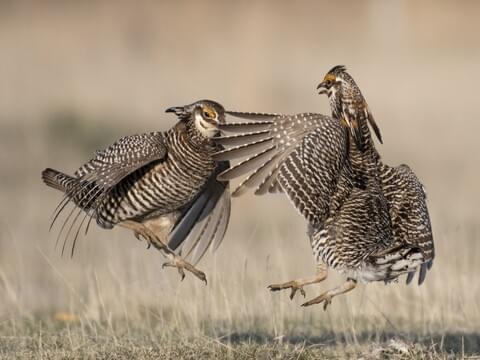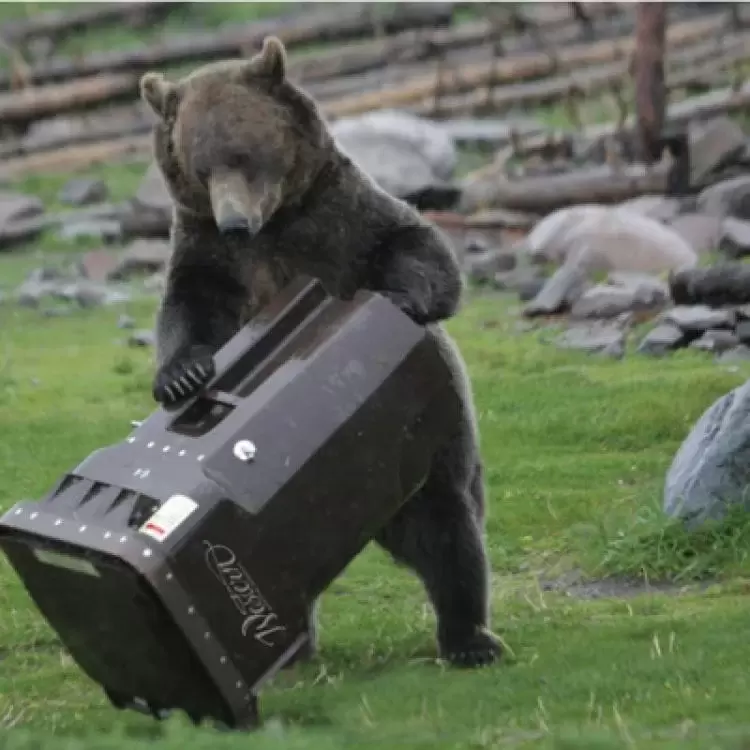Prairie Chickens Quotes
Prairie chickens are the keepers of the prairie....giving nutrition to grass, flowers, bushes, and small trees. Never underestimate the value of wildlife for the ecosystem.
--Dorothy M. Neddermeyer
The lesser prairie-chicken needs more protection! That's why Guardians has been fighting for more than two decades to get Endangered Species Act protection for this iconic, imperiled bird.
--@StopExtinctions
The lesser prairie chicken’s decline is a sign our native grasslands and prairies are in peril. These habitats support a diversity of wildlife and are valued for water quality, climate resilience, grazing, hunting and recreation. --Amy Lueders,
Prairie Chicken Protection
The Lesser Prairie Chicken has been listed on the Endangered Species list after twenty-five years of being eligible. In 1988 the Fish and Game Service designated the Prairie Chicken as "warranted but precluded" which in plain language means, We should list the birds but find it impossible to do that.
Congress and industrial powers hid behind that classification for years when the listing of Prairie Chicken's decline came up. The reason given, but not publicized has been the development of oil and gas projects. Government representatives from Kansas, Texas, and Oklahoma have brought suits to get the listing delayed, postponed, or repealed. In the meantime, the number of birds has fallen to 30,000 which is about 2% of the hundreds of thousands that existed when the Prairie Chickens flourished.
Prairie chickens are the keepers of the prairie....giving nutrition to grass, flowers, bushes, and small trees. Never underestimate the value of wildlife for the ecosystem.
--Dorothy M. Neddermeyer
The lesser prairie-chicken needs more protection! That's why Guardians has been fighting for more than two decades to get Endangered Species Act protection for this iconic, imperiled bird.
--@StopExtinctions
The lesser prairie chicken’s decline is a sign our native grasslands and prairies are in peril. These habitats support a diversity of wildlife and are valued for water quality, climate resilience, grazing, hunting and recreation. --Amy Lueders,
Prairie Chicken Protection
The Lesser Prairie Chicken has been listed on the Endangered Species list after twenty-five years of being eligible. In 1988 the Fish and Game Service designated the Prairie Chicken as "warranted but precluded" which in plain language means, We should list the birds but find it impossible to do that.
Congress and industrial powers hid behind that classification for years when the listing of Prairie Chicken's decline came up. The reason given, but not publicized has been the development of oil and gas projects. Government representatives from Kansas, Texas, and Oklahoma have brought suits to get the listing delayed, postponed, or repealed. In the meantime, the number of birds has fallen to 30,000 which is about 2% of the hundreds of thousands that existed when the Prairie Chickens flourished.
Prairie Chicken mating dancing
Bear Season
Spring is the season the Bears come out of hibernation if they haven't come out already because of the warm days. When they do wake after a long winter's nap, they are hungry. Homeowners need to clean up edible garbage around their property. Durango, Colorado was especially hard hit because of drought years in which bears did not find the usual natural bear food and came into town to feast on easy to find people-food in trash cans. After several years of researching bear-proof cans and other anti-bear tips to make coexisting with bears more enjoyable and safer, the following tips for living with bears are recommended:
1. Lock garbage cans and keep meat
scraps frozen until until the day of trash pick up.
2. Keep compost in bear-resistant
containers.
3. Enclose chicken coops and bees hives
in electric fencing.
4. Feed pets inside and store their
food inside.
5. Grill should be cleaned thoroughly
after each use.
6. Use bird feeders only during the winter when
the bear will be hibernating.
7. Hiking bring along Bear spray, hike with
a buddy, make noise.
8. Leave the dog at home (best) or
keep the dog on a leash.
Spring is the season the Bears come out of hibernation if they haven't come out already because of the warm days. When they do wake after a long winter's nap, they are hungry. Homeowners need to clean up edible garbage around their property. Durango, Colorado was especially hard hit because of drought years in which bears did not find the usual natural bear food and came into town to feast on easy to find people-food in trash cans. After several years of researching bear-proof cans and other anti-bear tips to make coexisting with bears more enjoyable and safer, the following tips for living with bears are recommended:
1. Lock garbage cans and keep meat
scraps frozen until until the day of trash pick up.
2. Keep compost in bear-resistant
containers.
3. Enclose chicken coops and bees hives
in electric fencing.
4. Feed pets inside and store their
food inside.
5. Grill should be cleaned thoroughly
after each use.
6. Use bird feeders only during the winter when
the bear will be hibernating.
7. Hiking bring along Bear spray, hike with
a buddy, make noise.
8. Leave the dog at home (best) or
keep the dog on a leash.

